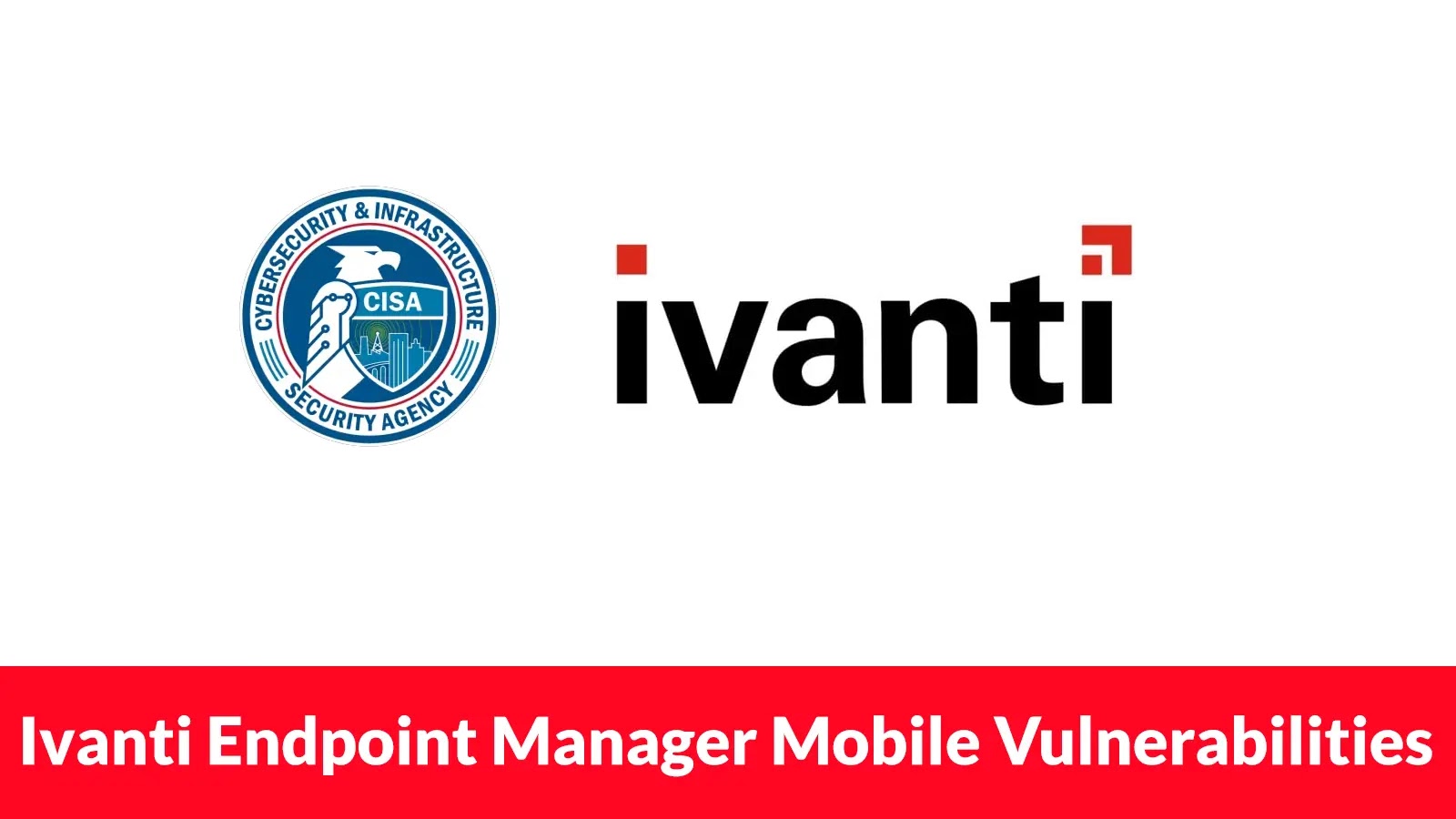
CISA Warns of Hackers Exploiting Ivanti Endpoint Manager Mobile Vulnerabilities to Deploy Malware
The Cybersecurity and Infrastructure Security Agency (CISA) has issued a critical warning that demands immediate attention from organizations leveraging Ivanti Endpoint Manager Mobile (EPMM) systems. Highly sophisticated threat actors are actively weaponizing two critical vulnerabilities to deploy advanced malware, enabling complete system compromise and persistent access. This isn’t a theoretical threat; it’s an ongoing attack campaign with significant implications for data security and operational integrity.
Understanding the Threat: Ivanti EPMM Vulnerabilities Exploited
CISA’s alert highlights the exploitation of two distinct, yet equally dangerous, vulnerabilities within Ivanti EPMM. These flaws provide attackers with a critical foothold, paving the way for extensive network penetration and data exfiltration. Organizations relying on Ivanti EPMM for mobile device management must understand the nature of these vulnerabilities:
- CVE-2025-4427: This vulnerability allows for arbitrary code execution on targeted servers. Attackers can leverage this to run commands, deploy malware, and establish persistence within the compromised environment.
- CVE-2025-4428: Complementing CVE-2025-4427, this vulnerability likely provides the initial access vector or further privileges an attacker needs to fully exploit the system. Together, these vulnerabilities create a potent pathway for complete system compromise.
The exploitation of these Ivanti EPMM vulnerabilities is part of a broader campaign aimed at establishing Advanced Persistent Threats (APTs). This signifies that the attackers are not merely seeking a quick gain but rather long-term access to monitor, exfiltrate data, and potentially disrupt operations at will.
The Impact of Successful Exploitation
A successful exploit of these Ivanti EPMM vulnerabilities can have devastating consequences for an organization. Once attackers gain control, they can:
- Achieve Complete System Compromise: Gain full administrative control over the Ivanti EPMM server, and by extension, potentially all managed mobile devices.
- Deploy Advanced Malware: Introduce sophisticated malware designed for stealth, reconnaissance, data exfiltration, and lateral movement within the network.
- Establish Persistent Access: Implement backdoors and other mechanisms to maintain access even if initial remediation efforts are attempted.
- Data Exfiltration: Steal sensitive corporate data, personal employee information, and intellectual property managed or accessible via the EPMM system.
- Operational Disruption: Potentially sabotage or disrupt mobile device management operations, impacting business continuity.
Remediation Actions and Mitigation Strategies
Given the active exploitation of these Ivanti EPMM vulnerabilities, immediate action is paramount. CISA and cybersecurity experts strongly recommend the following measures:
- Patch Immediately: Apply all available security patches and updates from Ivanti for EPMM. This is the most crucial step to close the exploited vulnerabilities.
- Isolate and Segment: Temporarily isolate Ivanti EPMM instances from the broader network if patching cannot be performed immediately, to limit potential damage.
- Conduct Forensic Analysis: Investigate all Ivanti EPMM servers for signs of compromise, including unusual log entries, unexplained processes, or suspicious network connections.
- Review Access Logs: Scrutinize authentication and access logs for EPMM and associated systems for any unauthorized activity.
- Reset Credentials: Force a password reset for all administrative accounts associated with Ivanti EPMM, especially if compromise is suspected. Consider implementing multi-factor authentication (MFA) if not already in place.
- Network Monitoring: Enhance network monitoring for unusual outbound connections or lateral movement originating from EPMM servers.
- Endpoint Detection and Response (EDR): Ensure EDR solutions are actively monitoring EPMM servers and associated endpoints for malicious activity.
Recommended Tools for Detection and Mitigation
Leveraging appropriate tools is vital in detecting, analyzing, and mitigating the risks associated with these Ivanti EPMM vulnerabilities:
| Tool Name | Purpose | Link |
|---|---|---|
| Ivanti Patch Connect | Manages and deploys patches for Ivanti products. | https://www.ivanti.com/products/patch-management |
| SIEM Solutions (e.g., Splunk, Elastic Security) | Aggregates and analyzes security logs for anomalies and indicators of compromise (IoCs). | https://www.splunk.com / https://www.elastic.co/security |
| Endpoint Detection and Response (EDR) Platforms | Detects and responds to advanced threats on endpoints, including servers. | (e.g., CrowdStrike Falcon, SentinelOne) |
| Network Intrusion Detection/Prevention Systems (NIDS/NIPS) | Monitors network traffic for malicious patterns and known attack signatures. | (Various vendors) |
Conclusion
CISA’s warning about the active exploitation of Ivanti EPMM vulnerabilities (CVE-2025-4427 and CVE-2025-4428) underscores the persistent and evolving threat landscape. Organizations must prioritize immediate patching, robust incident response planning, and continuous monitoring to defend against these advanced persistent threats. Proactive security measures are not merely recommendations; they are essential for maintaining operational integrity and safeguarding critical assets.





